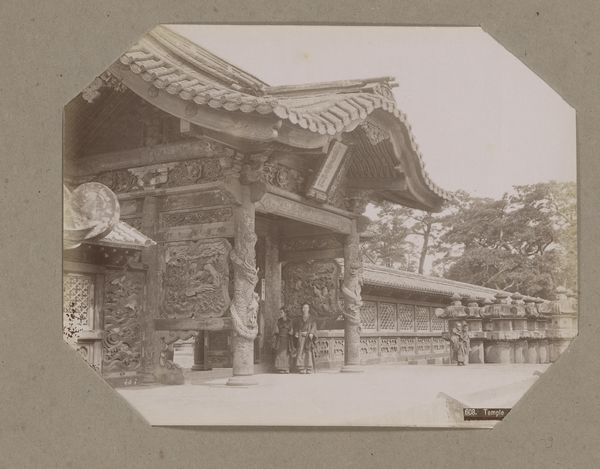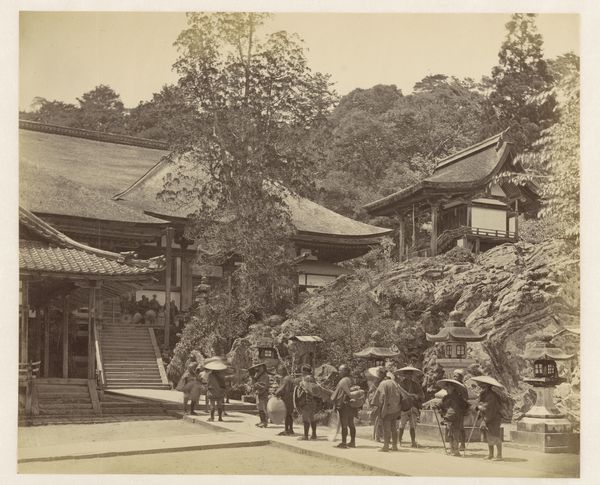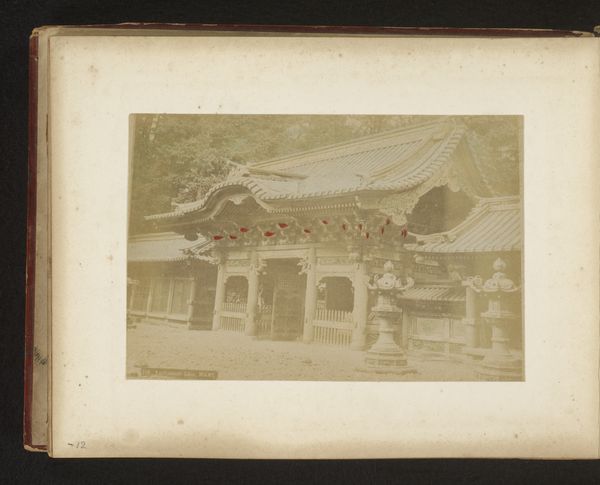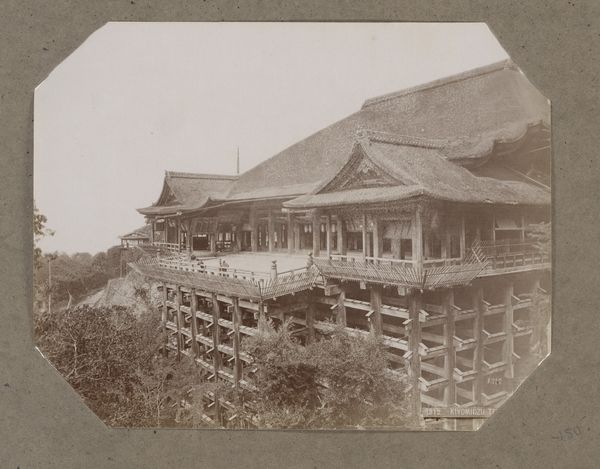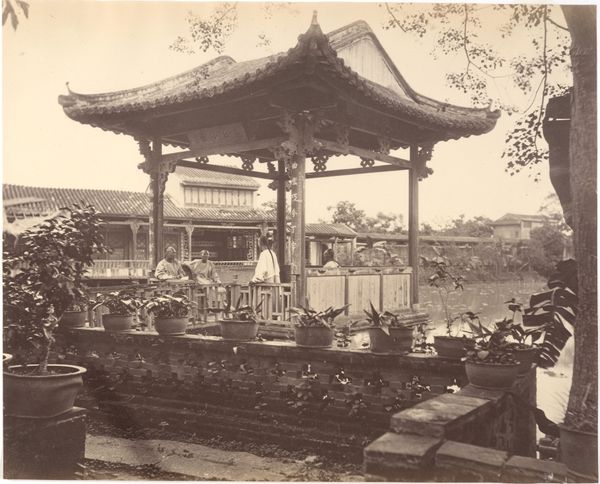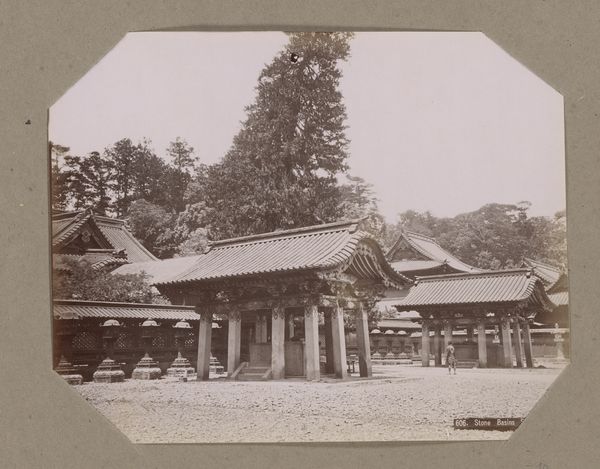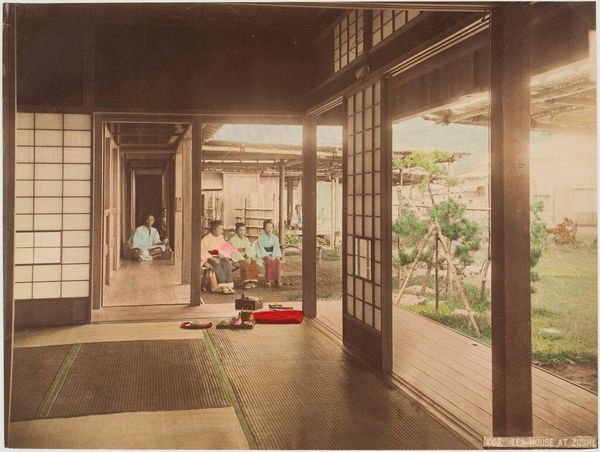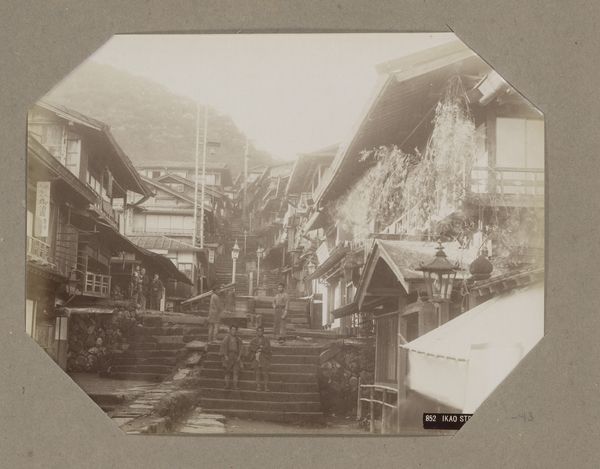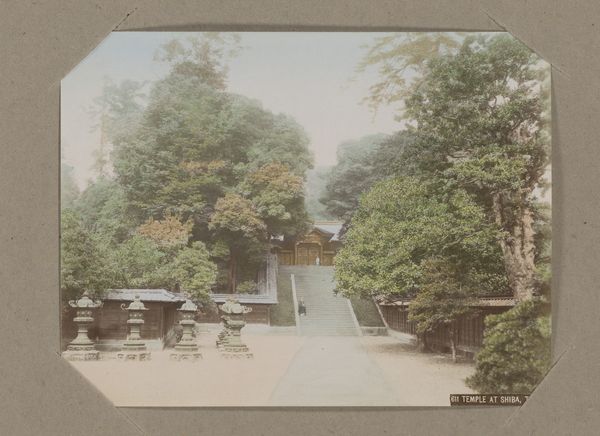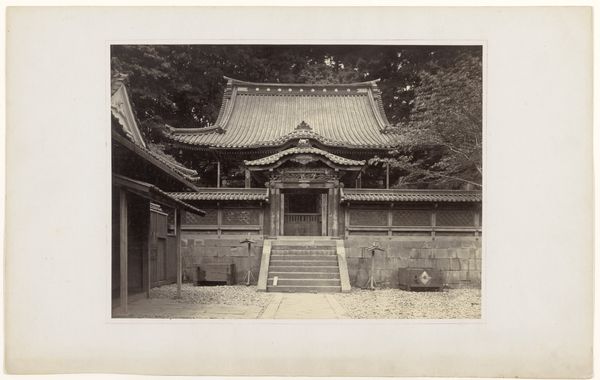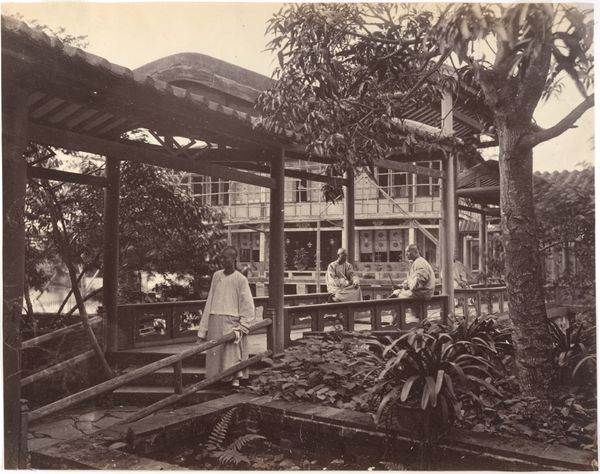
Dimensions: 7 13/16 x 10 1/8 in. (19.84 x 25.72 cm) (image)10 7/16 x 13 9/16 in. (26.51 x 34.45 cm) (mount)
Copyright: Public Domain
Curator: We are looking at "Kiyomizu at Kioto," a hand-colored albumen print from around 1891 by Tamamura K., found in the collection of the Minneapolis Institute of Art. This piece offers a glimpse into Meiji-era Japan, at a moment of significant cultural transformation. Curator: The sepia tones immediately draw the eye. Note the parallel lines—the rooftops, the vendor displays—all leading to a vanishing point. The overall effect feels almost like a stage set. Curator: Precisely! It is a set stage, really, when you consider the context of this photograph. It was mass-produced for Western consumption. Images like these constructed a particular image of Japan for the outside world, often reinforcing exoticized stereotypes. Curator: Even the placement of the figure feels deliberate. That young boy—his size anchors the composition, providing a human scale amidst the rigid architectural lines. It adds an element of unassuming grace. Curator: Indeed, yet what's the effect on him? He seems dwarfed by the commodification occurring all around. This photograph becomes a document not only of a place, but of cultural and economic exchange – transactions within a system of power. Curator: Still, it is the play of light across those surfaces – the rough texture of the wood, the gleam on the various goods displayed, all softened by that watercolor effect you pointed out before–that captivates me. Curator: What captivates me is how this print participated in constructing the narrative of Japan for Western audiences at the turn of the century. Was it portrait, or landscape or genre painting? Consider the ways identity and authenticity get manufactured, negotiated, consumed. This work reminds me to question every image I see. Curator: And I’m reminded of the subtle beauty that can arise from structured compositions. There is balance in how the artist handles tone, texture and shape. Curator: That structure reflects order and invites an appeal for stability in identity. The boy, the wares, the buyers and viewers are placed in an aesthetic hierarchy that reveals dynamics within and without the portrayed culture. Curator: I see a successful landscape picture rendered in multiple art disciplines as an arrangement of tones and geometric lines which pleases the eye, though, perhaps there's truth in both.
Comments
No comments
Be the first to comment and join the conversation on the ultimate creative platform.
